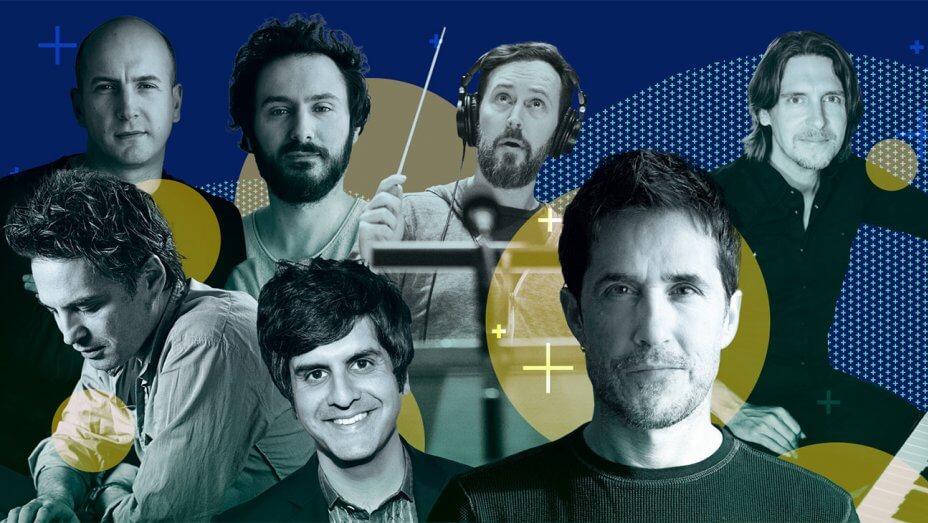TV’s top composers reveal the serendipity of found sounds and the “new, sometimes unexpected ways” they conjure to project emotions with a great score
via The Hollywood Reporter by Craig Tomashoff

Composer Jeff Russo always is on the lookout for new ways to create music for such off-kilter shows as FX’s Fargo and Legion. His approach has been to “take something in the character of the story in order to tie my music to the narrative,” he says. In the first season of Fargo, a washing machine played a critical role in the plot, so he recorded one and created a musical theme out of it. Fargo‘s latest season is about a parking lot owner and his bridge-playing brother, so the sounds of cars and card shuffling have been synthesized into musical notes.
Siddhartha Khosla has resorted to similar techniques for some of his work on NBC’s This Is Us. When he found himself slapping his hand against the side of his guitar or tapping on the table while writing, the rhythm from those sounds made their way into scenes, such as when Kate (Chrissy Metz) pounded sticks on the ground at weight-loss camp. “I want to be able to create a sound using everything within 5 feet of my desk,” he laughs.
Sometimes, though, ambient sounds like these pop up when composers aren’t even looking. When creating music for Netflix’s Orange Is the New Black, Scott Doherty was using one of his favorite techniques — creating tension with vocal sounds. While the tape was rolling, a dog in the studio let out a howl. Intrigued, Doherty decided to add some reverb and created background music he’d never anticipated. “It’s become one of the most unique sounds in our library going back to the first season,” he says.
Brothers Evgueni and Sacha Galperine, who scored the HBO movie Wizard of Lies, about Bernie Madoff, recorded the sound of a pen hitting a keyboard stand to create the percussive music that plays when the FBI arrests the Ponzi schemer. “In the early period of cinema, people systematically used the same codes to express emotions with music — strings for romance, brass for danger and drama, percussion for action,” explains Evgueni. “What we find interesting now is to explore new, sometimes unexpected ways to achieve this goal.”
That doesn’t mean composers have abandoned the idea that familiar instruments can amplify particular emotions. For the Netflix World War II documentary Five Came Back, composer Jeremy Turner began by using “the wailing effects from horns and trombones to become the ships” in battle scenes. “Long, broad strokes in the low strings created a feeling of the swells at sea, and snare drum patterns represented rapid machine gun fire,” he says.
Sometimes TV scores stick with tradition because that’s the world in which the show takes place. Mac Quayle knew going into FX’s Feud — the 1960s-set series about Joan Crawford and Bette Davis — that he had to go with music that evoked old Hollywood. “Unlike other scores I’ve worked on, this wasn’t really a situation where I could experiment with unusual sounds,” he says.
The Feud main title sequence became the ultimate showcase for Quayle’s orchestral approach. He designed it as a journey of emotions, starting with a clarinet, “to give a good sense of mystery and anxiety.” That builds to strings and brass for an “angry aggressiveness” to match the demeanor of Crawford and Davis. It ends by going back to clarinet, this time evoking a somber melody to indicate “the sad story of these women.” Now that he’s composed for a full orchestra, Quayle has new sounds rattling around his head. “It was really rewarding to explore that genre of music,” he says. “I’d never really written in that style, and it’s made me hungry for more of it.”